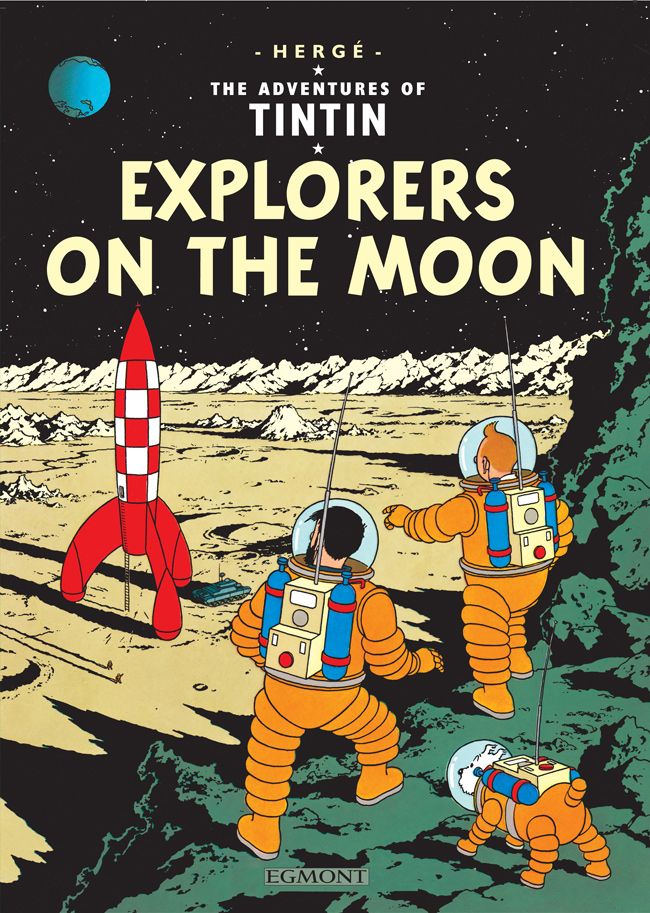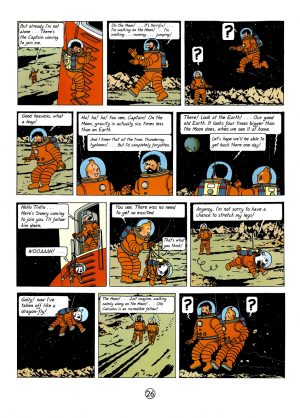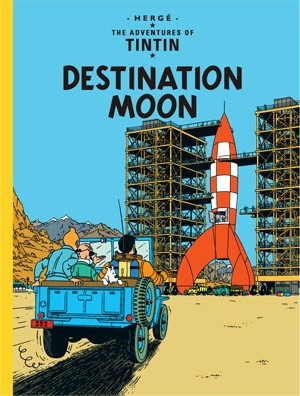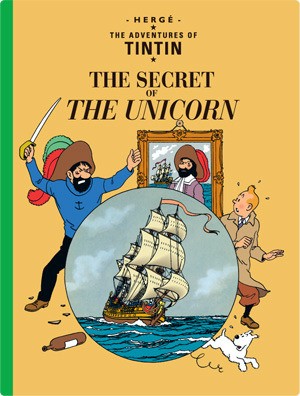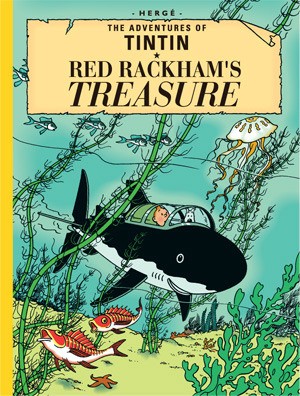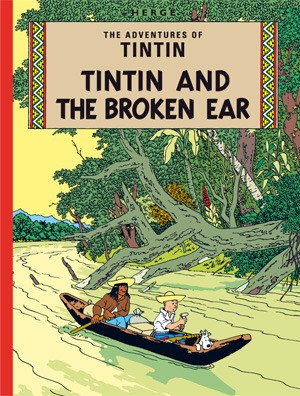Review by Roy Boyd
Spoilers in review
The conclusion to this two-book adventure begins where Destination Moon left off, as our intrepid heroes (Tintin, Haddock, Snowy, Calculus and assistant engineer Frank Wolff) blast into space, on their way to the Moon. Like the first volume, this is Hergé at the absolute top of his game.
Upon regaining consciousness after their launch (a plot device Hergé would revisit in the book’s conclusion) our heroes discover Thompson and Thomson have overstayed their visit to become inadvertent astronauts, which has a bearing on their oxygen situation: they’ve only allowed for four humans, and a dog. The Thompsons, as always, provide much of the light relief. Amongst other vaudevillian shtick, they suffer a relapse of the effects of the drug they swallowed in Land of Black Gold, which makes their hair grow (and change colour) at an astonishing rate. This provides, literally, bright splashes of colour in a story that is mostly grounded in scientific accuracy, with a limited palette.
Tintin becomes the first man on the Moon, and we are treated to various explorations of the lunar surface, including its stalactite-filled caves and lakes of ice. Hergé couldn’t be expected to get everything right, and had included water on the Moon on the advice of Bernard Heuvelmans, the respected scientist and ‘father of cryptozoology’, who had been heavily involved in the research and development for the book.
Yet another stowaway is discovered aboard the rocket: a returning villain from a previous book. Realising that their oxygen situation has become even graver than before – the crew having almost doubled in size – they decide to cut short their exploration and return home. En-route to Earth, the stowaway escapes, and his actions lead to one of the darkest episodes in a Tintin book.
Critics have compared one of the villain’s motivations with a character in a John le Carré or Graham Greene novel, and while that may be going too far, there is no doubt that Hergé was aiming for a sophistication in some of his characters beyond the simple rationale that they were sneaky imperialists, foreigners or greedy businessmen.
If Destination Moon was one of the slower Tintin adventures, then this more than compensates. Time plays a vital role here, giving Hergé ample opportunities to milk every drop of tension he can from the enclosed environment. When taken together with the previous volume, this is widely regarded as Hergé’s very best work, with one Tintin expert calling it, “A triumphant achievement on every level”. He wasn’t wrong.
